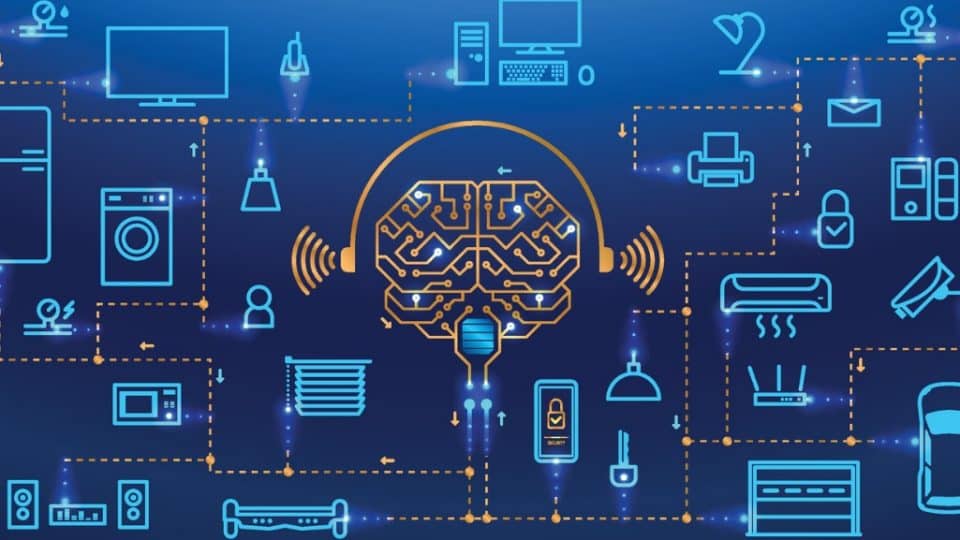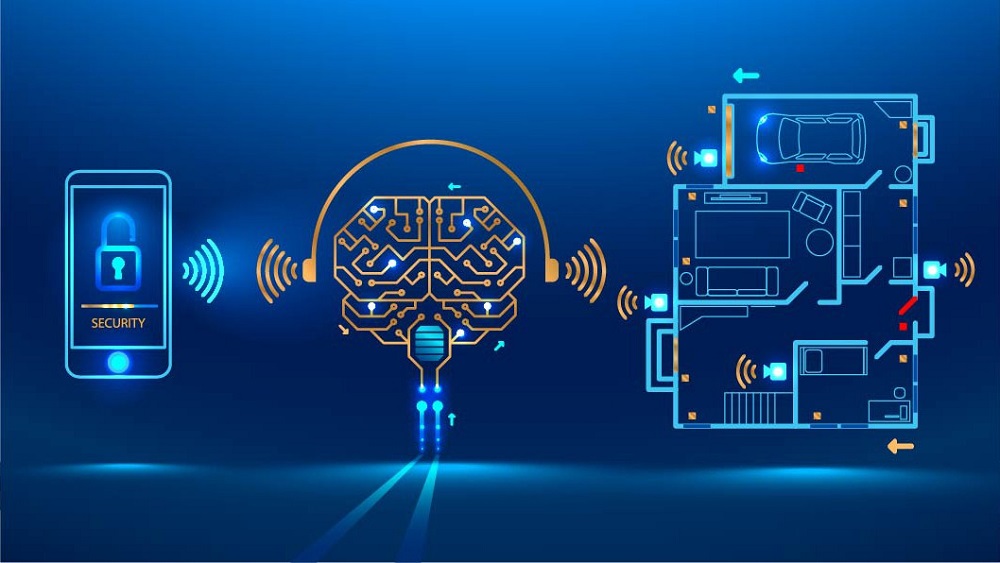Artificial Intelligence has been a buzzword in the technology world for a while now. Founded in 1956, the University of California, Berkeley’s renowned artificial intelligence laboratory—Berkeley AI Laboratory—has been working on artificial intelligence technologies since 1958. In 1972, they created a computer program that could “recognize things it had seen before.” Over time, artificial intelligence has progressed to today’s state of the art technologies such as deep learning artificial intelligence and natural language processing artificial intelligence.
In this blog, we will discuss the difference between artificial intelligence and internet of things and how artificial intelligence is used in internet of things systems. We will also touch upon some of its applications in industries like healthcare, retail automation, logistics, and robotics.

What is Artificial Intelligence (AI)?
– Artificial intelligence (AI) is a subset of machine learning that allows machines to learn from data.
– AI can be used in a variety of ways, including marketing and customer service. It’s a powerful technology that has the potential to change the way businesses operate. As AI becomes more widely adopted, there will be more opportunities for businesses to use it to their advantage.
– Currently, AI can perform tasks that are difficult for a human to accomplish, such as playing a game or recognizing a certain type of image. Its uses are only limited by a business’ imagination.
– As AI becomes better at recognizing patterns and understanding human behavior, there will be even more opportunities for businesses to use it to improve operations and enhance customer experiences.
What is Internet of Things (IoT)?
– The term ‘Internet of things’ refers to a network of interconnected devices that use the internet to communicate and share data.
– The internet of things is a computer technology that is growing rapidly, with many devices connected to the internet to exchange sensor data, analytics, and other digital information. It is a powerful tool for organizations of all sizes, a way of gaining insights into their operations and assets and of automating processes.
– IoT has several benefits such as cost savings, improved operational efficiency, enhanced security, and greater ability to monitor things remotely. It can also help businesses improve customer experience by connecting devices directly to a business’s backend systems. Also, it can help them improve operational efficiency by collecting sensor data from devices like smart meters or vehicles.
– How can businesses benefit from the internet of things? By embracing the technology and using it for their business goals, businesses can gain a competitive edge over their peers. The IoT offers a number of benefits such as improving operational efficiency, enhancing security, reducing costs, etc. Thus businesses should consider making use of this technology in their business plans.
– The internet of things has its share of challenges too. Though it provides a number of benefits, it also demands a lot of attention and planning in order to be successful.
What is the difference between AI and the Internet of Things?
Here are the main differences between AI and the Internet of Things:
AI as a data-driven approach to managing and automating processes
AI is a data-driven approach to managing and automating processes that uses artificial intelligence (AI) to make decisions. The internet of things (IoO) is a network of devices that are connected to the internet and can exchange data. IoT has the potential to change the way we live and work by allowing devices to interact with each other in ways that were not possible before.
AI and the internet of things both have the potential to revolutionize our daily lives through automation and optimization. However, they differ in how they use artificial intelligence algorithms and data-based decision-making processes. Overall, AI is a powerful technology that can be used to solve a variety of real-world problems, while the internet of things focuses on a specific niche of technology.
The Internet of Things as a network of devices and sensors that can interact with each other
The Internet of things (IoT) is a network of devices and sensors that can interact with each other to enable smart and connected applications. It is a powerful technology that can be used to create a wide range of intelligent and automated systems. One of the key benefits of using IoT is its ability to manage large data sets and improve accuracy. Artificial intelligence (AI) is a subset of the IoT that uses artificial intelligence to make decisions and improve performance. Both AI and IoT have their own distinct advantages, so it is important to consider when choosing which technology will work best for a particular application.
The use of AI in the IoT can help identify patterns in large datasets and make accurate decisions quickly. However, it is important to note that not all decision-making can be automated; some must still be made by human experts. Conversely, the internet of things allows devices to communicate without requiring an intermediary such as a computer or smartphone. This makes it possible for devices with complicated operating systems or limited intelligence to interact with each other and share data. Overall, the internet of things offers powerful technologies for building smart and automated systems, so it’s crucial to consider both AI and IoT when planning a project.
The Internet of Things benefits from AI integration
The Internet of Things, a network of physical devices that can be interconnected to exchange data, is a beneficial technology that benefits from artificial intelligence integration. In particular, artificial intelligence can help devices detect and respond to changes in their environment more quickly. Additionally, by learning and making decisions on their own, artificial intelligence devices have the potential to become more autonomous and capable of performing complex tasks. The integration of artificial intelligence into the internet of things through machine learning has led to increased accuracy and efficiency in a variety of applications.
Conclusion
AI is a technology that helps automate a range of tasks and make decisions based on data. AI-enabled devices collect data and use algorithms to solve a variety of problems, from smart automation of processes to improved user experience. The internet of things (IoT) is a network of physical devices that work together to collect, exchange, and use data. IoT involves connecting things like computers, smartphones, wearable devices, and smart home appliances to create a connected ecosystem where they can communicate with each other. Both AI and the internet of things are technologies that have a major impact on our lives today. Comment below if we have missed any important aspect of AI.

